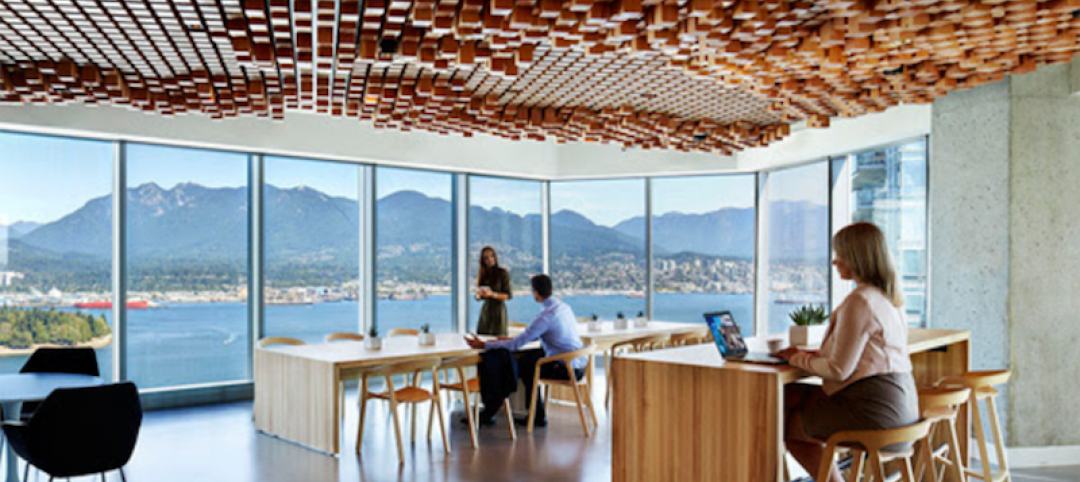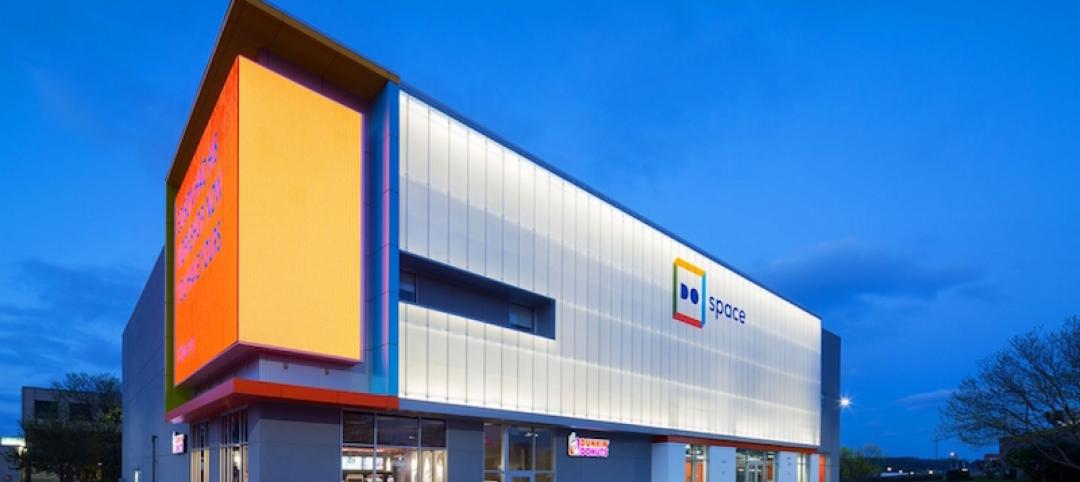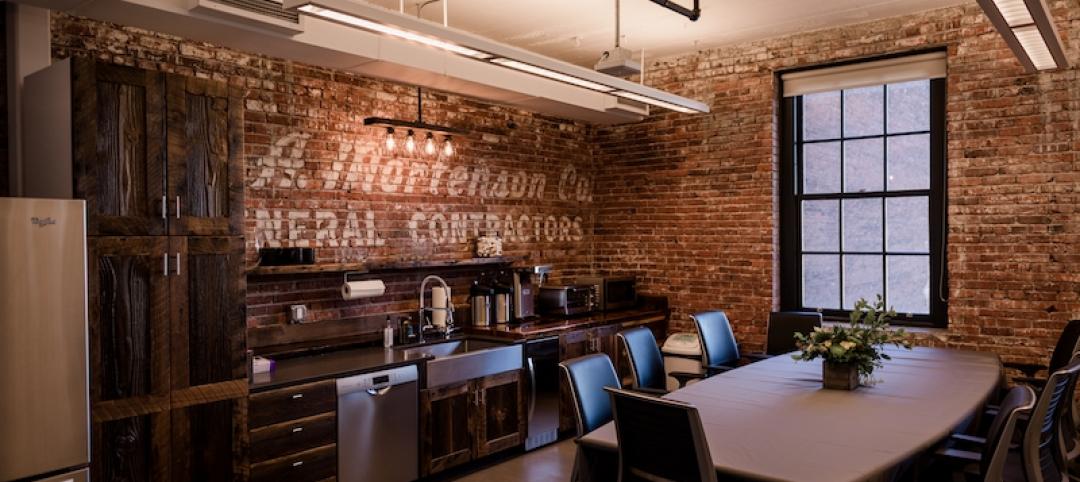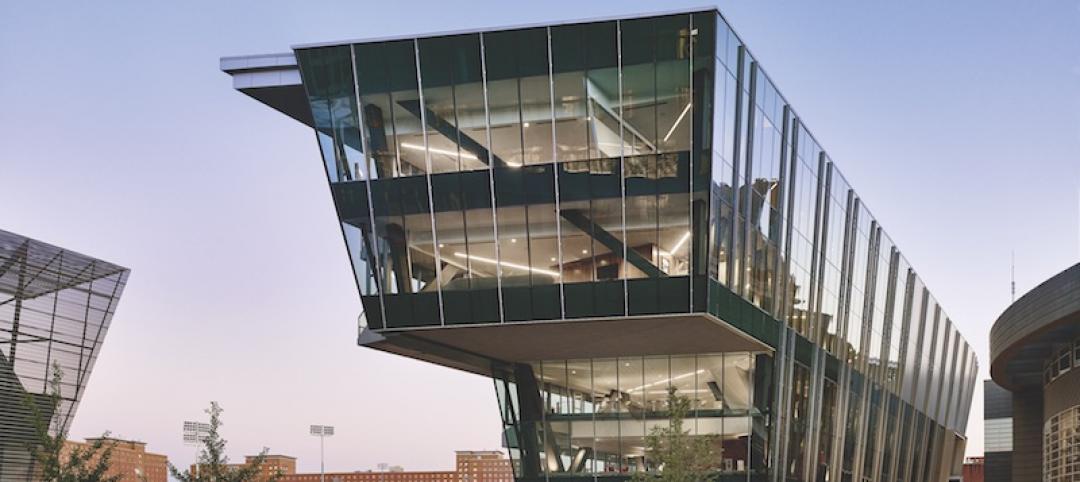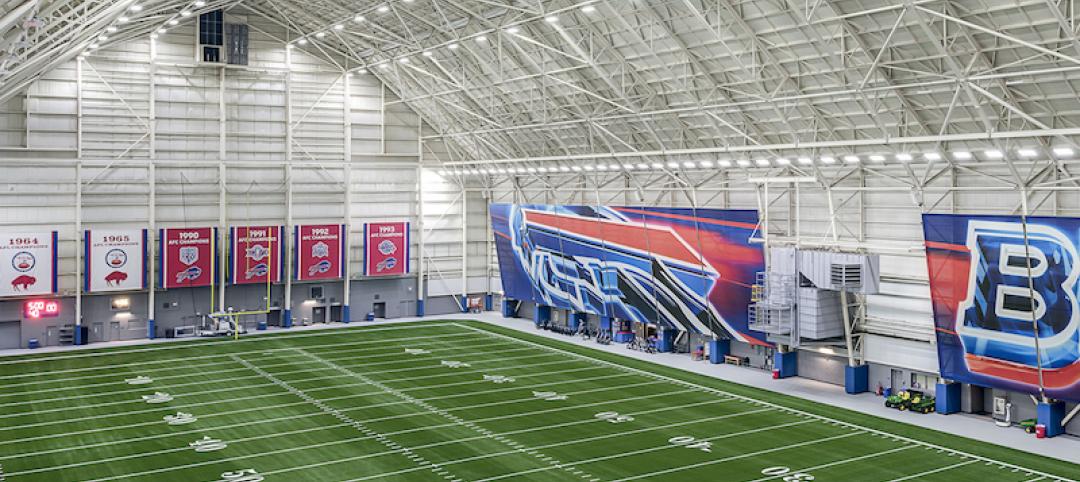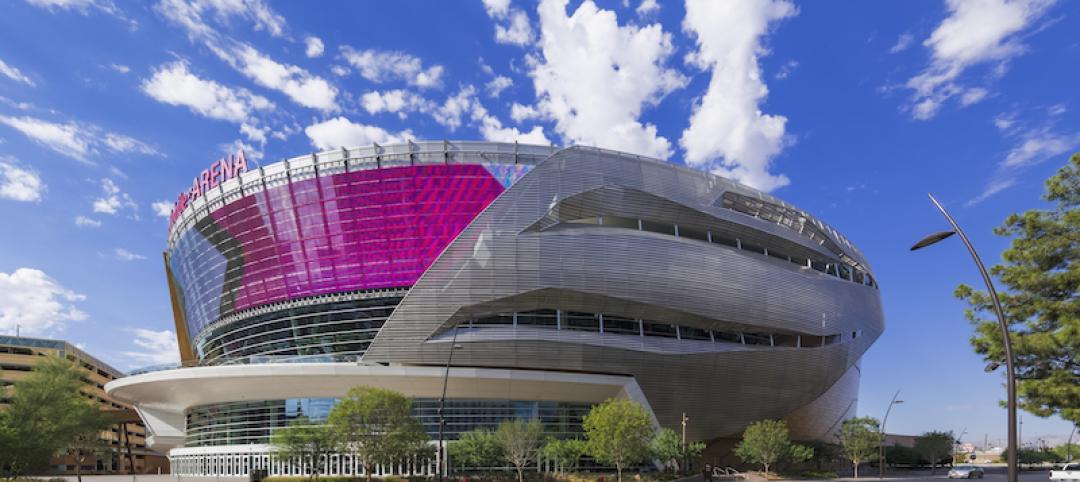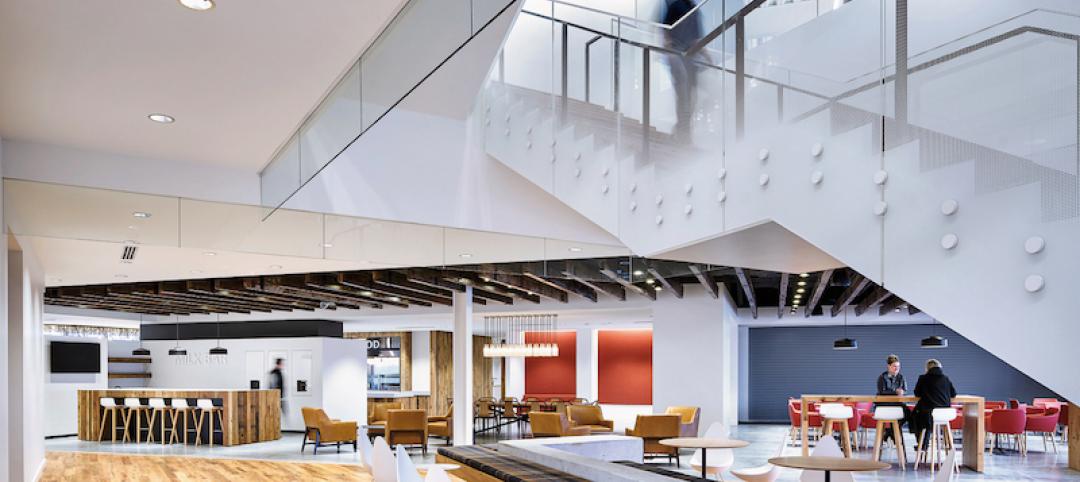In April, HOK was selected to design the three-story, 80,000-sf corporate headquarters for Consumers Credit Union in Kalamazoo, Mich.
In describing the design for this Class A building, HOK’s Principal-in-charge, Dan Sullivan, AIA, used words like “flexibility,” “interactivity,” “environmental stewardship,” and “employee engagement.” The design also accommodates potential future expansion of up to 300,000 sf.
Those buzzwords are likely to resonate with property owners whose office spaces are meant to appeal to Millennials, those 18- to 34-year-olds who account for more than half of America’s workforce.
TOP OFFICE SECTOR ARCHITECTURE FIRMS
1. Gensler $512,720,000
2. HOK $140,688,000
3. Perkins+Will $113,700,000
4. Stantec $76,427,618
5. Skidmore, Owings & Merrill $70,962,348
TOP OFFICE SECTOR ENGINEERING FIRMS
1. AECOM $947,497,000
2. Jacobs $512,160,000
3. Burns & McDonnell $69,727,005
4. Thornton Tomasetti $65,486,893
5. WSP | Parsons Brinckerhoff $54,344,358
TOP OFFICE SECTOR CONSTRUCTION FIRMS
1. Turner Construction $2,332,439,971
2. Structure Tone $1,979,004,000
3. Gilbane Building Co. $1,522,232,308
4. Skanska USA $1,492,297,413
5. Balfour Beatty US $1,205,407,428
OFFICE GIANTS SPONSORED BY:
In a recent post on Area Development Online’s website (http://bit.ly/1FegDPY), Josh Kuriloff, Executive Vice Chairman at mega-developer Cushman & Wakefield, observed that Millennials aren’t keen on conventional private offices. They prefer layouts that are amenable to “activity-based working.”
“Design today is intended to trigger innovation, fresh ideas, and a sense of community,” said Kuriloff. “Good design is a catalyst that fosters conversation—and unanticipated epiphanies. Even cubicles, once intended to preserve privacy, now promote collaboration with lowered partitions and improved ergonomics.”
Clients are asking for designs that will help them recruit and retain younger talent. The workplace needs to act as a communications tool that “aids in celebrating individual or team contributions, broadcasting organization goals or objectives, and providing spaces for effective collaboration,” says Isilay Civan, PhD, LEED AP, a Research and Innovation Specialist at HOK.
A recent Gensler project, the 600,000-sf Motorola Mobility headquarters, in Chicago, includes open, collaborative offices, an outdoor terrace, lab benching, production-line equipment, food service, conference rooms, and a customer service center.
“When competing against many otherwise similar properties, a strong branding strategy can deliver a unique and memorable hook or visual style that truly creates differentiation,” says Beth Novitsky, Gensler’s Global Brands Design Practice Leader. “We are creating spaces that communicate a lifestyle and an experience.”
In its Design Forecast 2015, Gensler said office designs that give clients an edge with Millennials place a premium on sustainability, wellness, loftlike spaces, and locations that are active, transit-friendly, and walkable. Workspaces must promote wellness, and must integrate smart technology to increase occupant performance.
OFFICE CONSTRUCTION SPENDING coming BACK
Market watchers are in general agreement that office construction is finally getting back on track. Even though office starts were off by 6%, to 20.8 million sf through Q1/2015, there were 8.7 million sf of office completions, a 102% increase over the same period in 2014, according to JLL’s First Quarter 2015 U.S. Office Outlook. Office construction spending in that quarter rose 13.5% to $48.9 billion.
CoStar estimates that 108 million sf of office space was under construction in the first quarter, a 17% gain over the same period a year earlier. Construction levels in Q1/2015 were above historic norms in a third of the largest U.S. metros.
For the year, there will be 104 million sf of net absorptions and 56 million sf of office space delivered, says real estate services firm Marcus & Millichap. The bulk of new supply (81%) and half the demand (50%) will be confined to 15 metros.
In its National Office Report 2015, Marcus & Millichap ranks San Francisco tops on its National Office Property Index, followed by San Jose, Seattle–Tacoma, New York, and Orange County, Calif. The index is based on such factors as employment growth, vacancy, and rents.
The research firm’s Developer Confidence Index, which highlights markets with the highest increase in speculative office space as a percentage of overall inventory, was led by Dallas–Fort Worth, followed by Los Angeles, Austin, Seattle–Tacoma, and San Jose.
Marcus & Millichap states that office-based businesses, which historically account for more than a third of the country’s job creation, are hiring aggressively—to the point where “office-using jobs will continue to recover well ahead of total nonfarm employment.”
Office market highlights from Marcus & Millichap
• Dallas–Fort Worth: Developers will deliver 6 million sf of office space this year, versus 3.7 million sf in 2014. Deliveries in Houston are expected to rise 42% to 11.1 million sf.
• Chicago: Nearly one-quarter of the 4.6 million sf of office space under construction is scheduled to come online this year.
• Denver: The 1144 Fifteenth development, a 640,000-sf speculative office building that broke ground last month, will be the largest office tower built in the Mile High City in nearly three decades.
• Los Angeles: As of Q1/2015, more than 1.5 million sf of the 2.4 million sf of office space that should be completed this year had no pre-leasing commitments.
• New York City: Completions are expected to drop 28%, to 2.8 million sf, this year.
• Phoenix: Deliveries will more than double to 2.5 million sf in 2015, from 1.1 million sf in 2014. Major projects include the $125 million, 410,000-sf expansion of Wells Fargo’s campus in Chandler, Ariz.
• San Jose: Pre-leasing is robust. Completions this year are expected to hit 3.5 million sf, versus 950,000 sf in 2014.
• Washington, D.C.: Developers continue to build, despite projections that 20% of the metro’s office space will sit empty this year.
Source: Marcus & Millichap, National Office Report 2015
RETURN TO THE GIANTS 300 LANDING PAGE
Related Stories
Giants 400 | Oct 30, 2017
Top 45 green engineering firms
WSP, AECOM, and Arup top BD+C’s ranking of the nation’s largest green sector engineering and EA firms, as reported in the 2017 Giants 300 Report.
Giants 400 | Oct 30, 2017
Top 130 green architecture firms
Gensler, Stantec, and HOK top BD+C’s ranking of the nation’s largest green sector architecture and AE firms, as reported in the 2017 Giants 300 Report.
Giants 400 | Oct 30, 2017
Rewriting history: Legacy building conversions spur redevelopment in America’s older cities
Businesses, developers, and civic leaders are repurposing existing structures to celebrate history, attract tenants, and serve as a catalyst for future development.
Giants 400 | Oct 26, 2017
Top 115 reconstruction construction firms
Gilbane Building Co., Structure Tone, and Turner Construction Co. top BD+C’s ranking of the nation’s largest reconstruction sector contractors and construction management firms, as reported in the 2017 Giants 300 Report.
Giants 400 | Oct 26, 2017
Top 70 reconstruction engineering firms
WSP, Jensen Hughes, and STV top BD+C’s ranking of the nation’s largest reconstruction sector engineering and EA firms, as reported in the 2017 Giants 300 Report.
Giants 400 | Oct 24, 2017
Top 160 reconstruction architecture firms
Gensler, Jacobs, and Stantec top BD+C’s ranking of the nation’s largest reconstruction sector architecture and AE firms, as reported in the 2017 Giants 300 Report.
Giants 400 | Oct 23, 2017
Wooing jocks and fans
Colleges are going all out to optimize the fan experience and make the most of student athletes’ time.
Giants 400 | Oct 20, 2017
Top 20 sports engineering firms
WSP, Walter P Moore, and ME Engineers top BD+C’s ranking of the nation’s largest sports sector engineering and EA firms, as reported in the 2017 Giants 300 Report.
Giants 400 | Oct 20, 2017
Top 40 sports architecture firms
Populous, HOK, and HKS top BD+C’s ranking of the nation’s largest sports sector architecture and AE firms, as reported in the 2017 Giants 300 Report.
Giants 400 | Oct 19, 2017
Race for talent drives office designs
Is the shift toward attracting younger workers too much or not enough?





